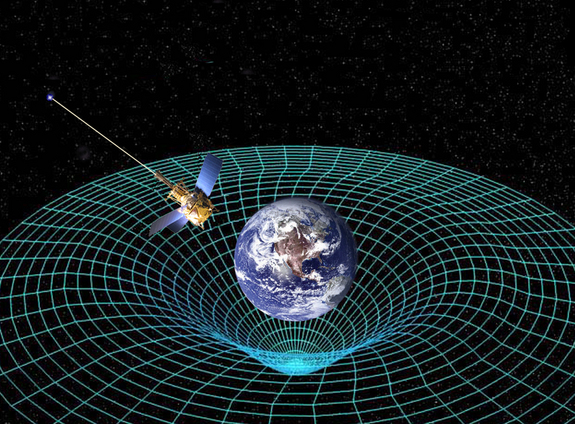What Is Relativity?

Albert Einstein was famous for many things, but his greatest brainchild is the theory of relativity. It forever changed our understanding of space and time.
What is relativity? Succinctly put, it is the notion that the laws of physics are the same everywhere. We here on Earth obey the same laws of light and gravity as someone in a far off corner of the universe. [8 Ways You Can See Einstein's Theory of Relativity in Real Life]
The universality of physics means that history is provincial. Different viewers will see the timing and spacing of events differently. What for us is a million years may just be a blink of an eye for someone flying in a high-speed rocket or falling into a black hole.
It's all relative.
Special relativity
Einstein's theory is divided into special and general relativity.
Special relativity came first and is based on the speed of light being constant for everyone. That may seem simple enough, but it has far-reaching consequences.
Einstein came to this conclusion in 1905 after experimental evidence showed that the speed of light didn't change as the Earth swung around the sun.
Get the world’s most fascinating discoveries delivered straight to your inbox.
This result was surprising to physicists because the speed of most other things depends on what direction the observer is moving. If you drive your car alongside a railroad track, a train coming at you will seem to be moving much faster than if you turned around and followed it in the same direction.
Einstein said that all observers will measure the speed of light to be 186,000 miles per second, no matter how fast and what direction they are moving.
This maxim prompted the comedian Stephen Wright to ask: "If you are in a spaceship that is traveling at the speed of light, and you turn on the headlights, does anything happen?"
The answer is the headlights turn on normally, but only from the perspective of someone inside the spaceship. For someone standing outside watching the ship fly by, the headlights do not appear to turn on: light comes out but it's traveling at the same speed of the spaceship.
These contradictory versions arise because rulers and clocks — the things that mark time and space — are not the same for different observers. If the speed of light is to be held constant as Einstein said, then time and space cannot be absolute; they must be subjective.
For instance, a 100-foot-long spaceship traveling at 99.99% the speed of light will appear one foot long to a stationary observer, but it will remain its normal length for those onboard.
Perhaps even weirder, time passes slower the faster one goes. If a twin rides in the speeding spaceship to some distant star and then comes back, she will be younger than her sister who stayed on Earth.
Mass, too, depends on speed. The faster an object moves, the more massive it becomes. In fact, no spaceship can ever reach 100% of the speed of light because its mass would grow to infinity.
This relationship between mass and speed is often expressed as a relationship between mass and energy: E=mc^2, where E is energy, m is mass and c is the speed of light.
General relativity
Einstein wasn't done upsetting our understanding of time and space. He went on to generalize his theory by including acceleration and found that this distorted the shape of time and space.
To stick with the above example: imagine the spaceship speeds up by firing its thrusters. Those onboard will stick to the ground just as if they were on Earth. Einstein claimed that the force we call gravity is indistinguishable from being in an accelerating ship. [Einstein Quiz: Test Your Knowledge of the Famous Genius]
This by itself was not so revolutionary, but when Einstein worked out the complex math (it took him 10 years), he discovered that space and time are curved near a massive object, and this curvature is what we experience as the force of gravity.
It is difficult to picture the curved geometry of general relativity, but if one thinks of space-time as a kind of fabric, then a massive object stretches the surrounding fabric such that anything passing nearby no longer follows a straight line.
The equations of general relativity predict a number of phenomena, many of which have been confirmed:
- bending of light around massive objects (gravitational lensing)
- a slow evolution in the orbit of the planet Mercury (perihelion precession)
- frame dragging of space-time around rotating bodies
- weakening of light escaping gravity's pull (gravitational redshift)
- gravitational waves (ripples in space-time fabric) caused by cosmic smashups
- the existence of black holes that trap everything including light
The warping of space-time around a black hole is more intense than anywhere else. If the space-faring twin fell into a black hole, she would be stretched out like spaghetti.
Luckily for her, it would all be over in a few seconds. But her sister on Earth would never see it end — watching her poor sister inching incrementally toward the black hole over the age of the universe.
Additional resources:
- Watch this video explaining what relativity is all about, from Fermilab.
- Read more about Einstein's theory of general relativity, from Space.com.
- Find out more about Albert Einstein's life and scientific discoveries, from The Nobel Foundation.
This article was updated on July 2, 2019, by Live Science Contributor Tim Childers.



